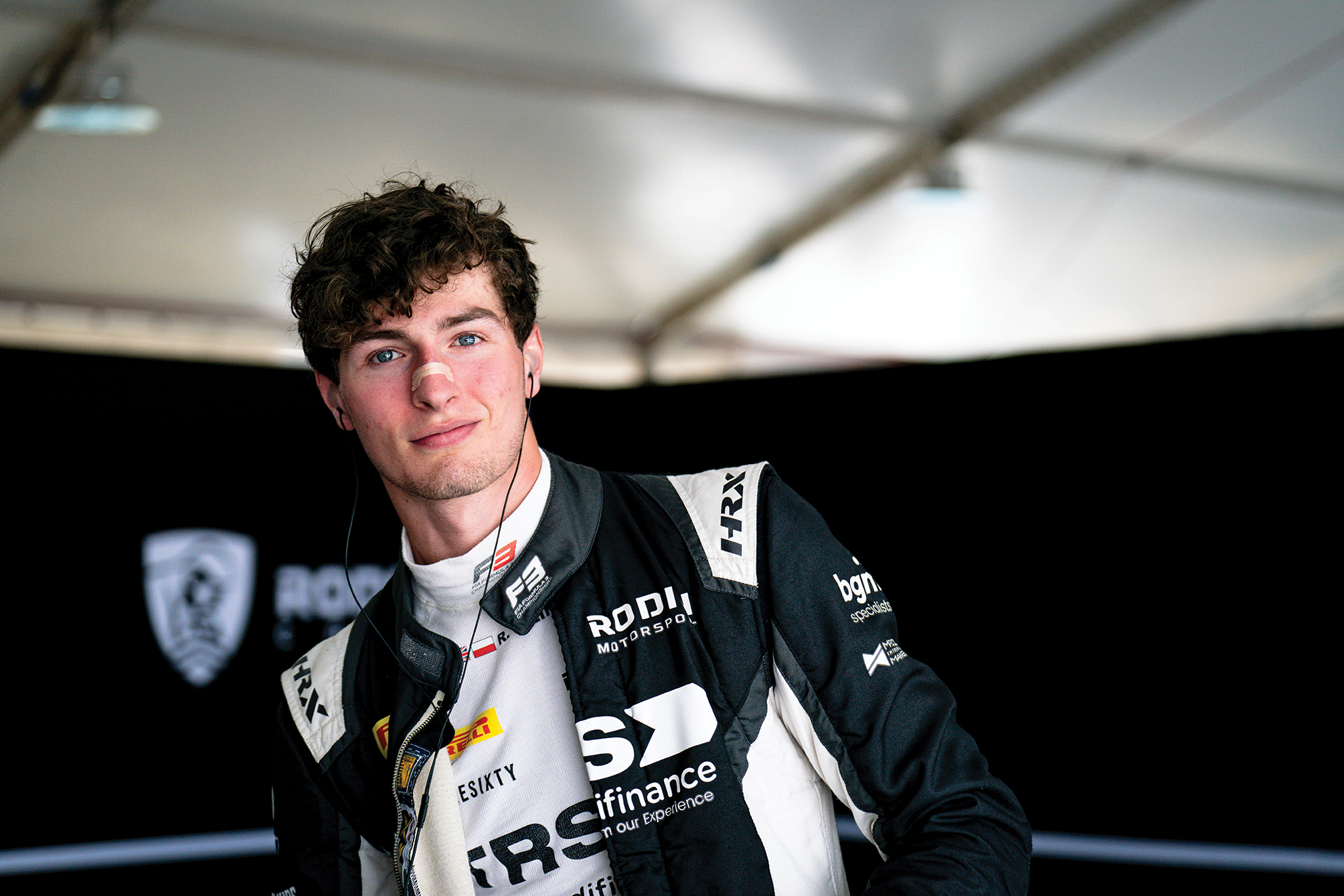The Final Stop is F1
An interview with Roman Biliński, Formula 3 racing driver, by Jarosław Ziobrowski
First of all – congratulations! What emotions did you feel after reaching the podium in your Formula 3 debut in Melbourne?
Thank you for the congratulations and support! Standing on the podium in my debut race in Formula 3 was an incredible feeling, especially since. I was the first Polish driver to achieve a podium finish in this series. But to be honest, the biggest joy of this season for me was finishing 2nd in the most prestigious F3 race of the season – the one in Monte Carlo. It’s every driver’s dream to race there, and finishing second was just unbelievable.
How long does a Formula 3 race last? Is it very different from a Formula 1 race?
We have two races: the sprint, which is a bit shorter and lasts about 30 minutes, and the main race, which is about 10 minutes longer. Both are, of course, shorter than their F1 equivalents.
After all, F1 is the “queen of motorsport,” so the distances have to be fit for a queen.
As for the cars – how do F3 cars differ from F1? What’s their top speed?
Our top speed is 300 km/h, and overall F3 cars are a bit slower on straights and corners because we have less power and downforce. Interestingly, there isn’t a huge difference between F3 and F2 cars, because one makes up on the straights while the other handles better in corners. But F1 is already space-age technology from another world, and I hope that in two years I’ll get a taste
of driving the fastest cars.
From Formula 3 to Formula 1 it’s not such a long way. What does that path look like?
Yes, that’s true, but I want to take it step by step. My next goal is Formula 2, where I plan to compete next season, and as I’ve already said, the final stop is F1. To get there, I need good results consistently, but sponsors also play a very important role—let’s not forget this isn’t
a cheap sport, and it’s nearly impossible to reach the top without the right partners.
How do you maintain physical fitness? Which training elements are key for you?
A racing driver’s training is very specific because we need both strength and endurance, but at the same time we must not increase body mass. We need to weigh as little as possible. We do a lot of neck training because of the G-forces in corners—that’s simply enormous pressure. Cardio is extremely important too, since driving race cars is physically demanding, especially in the heat, which in the cockpit can reach even 55°C (131°F), causing major water loss. In just one short race lasting under an hour, we can lose up to about 1.5 kg of body weight.
What does your typical day look like off the track? Do you have hobbies that let you disconnect from racing?
Outside of racing, I’ve recently gotten into fashion, which I enjoy and see as an interesting challenge. It also gives me a kind of escape from the everyday training routine. Of course, I still train daily in the gym and with the team to prepare for the next races. And in my free time away from racing and fashion, I love playing golf.
In 2024 you had a serious accident and spinal surgery. What was harder in returning to racing – the physical or mental challenges?
Coming back to racing was an extremely tough challenge, but the mental side played a huge role. My dream of racing in Formula 1 and my stubborn drive to achieve it gave me incredible determination. It’s hard to explain, but after the accident, when doctors told me I might never walk again, I told myself it wouldn’t end like that. I had to walk, because I had to race. I had to race, because I had to fulfill my dream and reach F1. That’s how it was. Physically, it was a daily, grueling fight to regain fitness and sensation in my leg. And then, of course, the constant battle with pain, which I still feel to this day. But as you can see, I didn’t give up and I came back to fight for my dream. Today I’m once again doing what I love—and doing it at a high level.
What would you say to young people who dream of a career in motorsport? What was your biggest breakthrough on this path?
Start karting as early as possible—that’s my advice. Learning the basics at a young age is extremely important. And after that? Never give up, never doubt yourself, and if racing is truly what you want in life, go for it and give 100%!
And finally – what car do you drive privately?
I might surprise many people, since I’m a racing driver, but on a daily basis
I drive… a Range Rover.







